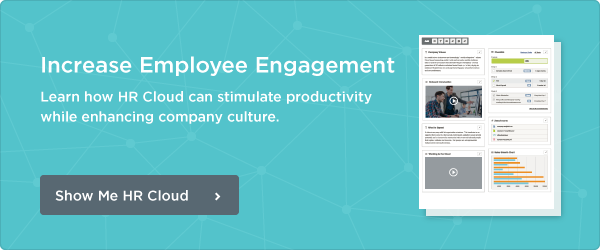HR software brings about change. It changes HR processes. It changes the way HR looks at data. And it changes procedures for employees. But can software impact culture? And can it change culture for the better?
In a LinkedIn discussion forum, members offer two differing points of view.
1. "We need to be careful not to let an HRIS system change our culture/procedures/guidelines. When the out of the box parameters of a system force companies to change the way they operate, company's give up their unique culture to fit a system. The human still needs to ask the right questions.” —Bobbi O'Rourke
2. "When technology gives you stunning new capabilities that enable new ways of working (and I'd cite my own always-on engagement surveys as a great example), then it may well be worth making some procedural changes to take advantage of them.” —Hugh Tonks
As an HR leader you will run into both sides and you need to be clear about each.
Let’s start with the easy one: clearly, argument number #2 by Tonks in favor of changing procedures is often right. For example, new recruiting software may require revised processes with the payoff being a better applicant experience and faster filling of vacancies. We’d be foolish not to embrace this type of change with open arms.
If technology “gives you stunning new capabilities” then what is the source of anxiety behind argument #1? Why does O’Rourke fear that technology may change the culture/procedures/guidelines? The root of anxiety is that a new system may force changes in how HR works. For example imagine a performance management process that includes some kind of thoughtful peer feedback. If new software forces HR to drop that step because it doesn’t fit into the standard workflow then HR should be asking what impact that will have.
To balance these two points of view we need to distinguish between changes to organizational culture and changes to procedures or guidelines. For example, if HR software replaces a human interaction with an automated response then that is potentially more than a change to procedure, it may change how people at the company collaborate on a particular task.
However, all too often complaints about redesigning procedures, even if they are wrapped up in language of “the change won’t suit our culture,” are really just reluctance to change a familiar way of working. If you can remember when organizations shifted from using Lotus 123 to Excel there were complaints from Lotus die-hards about being forced to do things a new way. We can’t let simple reluctance to learn something new get in the way of the improvements technology can bring.
So here are the important take-aways:
• Don’t let the natural resistance to change an established process be confused with a threat to culture. The adoption of any new HR software should lead to a reevaluation of processes. We should expect processes to change and change for the better.
Tweet: Don’t let resistance to change a process be confused with a threat to culture. @HRCloud
• At the same time we should expect—and respect—stakeholders’ resistance to change even when those changes are a good idea. We will have a lot more success with new HR technology if we invest in getting buy-in from stakeholders early on in the process.
HR technology is becoming ever more important to how HR functions. HR leaders should take the time to gather their thoughts on discussions like this one because similar issues will arise time after time.
Keep Reading
Balancing Technology and the Human Touch in Employee Engagement
Companies are taking employee engagement very seriously because it is one of the ways of
Building Strong Teams: The Power of Team Bonding Exercises
Never overestimate the power of collaboration as a core element of effective team


